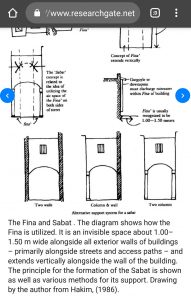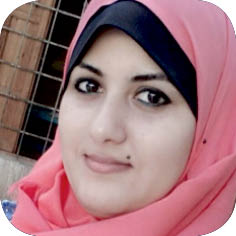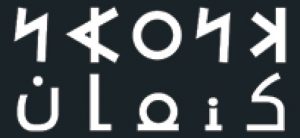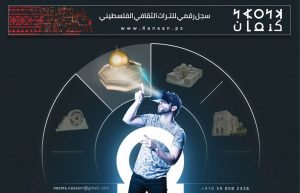Kanaan is a multi-disciplinary project that emerged at the initiative of a team of specialists in cultural heritage. Kanaan aims to valorize Palestinian cultural assets as tourism resources through user-friendly and stakeholder-relevant e-services in order to increase public awareness about Palestinian cultural heritage.
My first inspiration for founding Kanaan was my passion in using new technology to participate in the preservation of Palestinian cultural heritage, where the past meets the future. It may seem contradictory to combine the past (“heritage”) and the future (“technology”), but I belong to the new generation of architects who seek to utilize cutting-edge technologies, such as augmented reality, to revitalize the ancient cultural heritage found in Palestine, especially in the Gaza Strip.
Palestine has a distinct historical and cultural significance worldwide as the birthplace of religions and the home of civilizations that have flourished since the dawn of history. An indication of this prestigious status is the number of cultural heritage sites it contains: 50,320 sites are distributed throughout 422 urban centers, as listed in RIWAQ’s Register of Historic Buildings in Palestine.*1 Among the distinctive examples of this cultural heritage are Jericho’s oldest defensive system in the world (8000 BC), a temple in Ain Jedi (4000 BC), Masada Castle which was built by Herod, the hill of Megiddo (1000 BC), and others.
The Gaza Strip is located in the southwestern part of Palestine where many civilizations thrived during the Canaanite, Greek, Roman, and Islamic periods. Some of the Strip’s archeological sites appear above ground, whereas many others are still hidden beneath the earth’s layers.
Gaza City contains the largest number of cultural heritage sites in the Gaza Strip. According to a list published by Iwan Center in 2009,*2 there are approximately 173 historical buildings in Gaza, 75 percent of which are residential houses from the Ottoman period, whereas the others are public buildings such as mosques, baths, sabeel (Arabic architectural element, fountain), sobat (an architectural element that connects two buildings above a narrow street), palaces, and others. But unfortunately, cultural heritage in the Gaza Strip suffers from many problems that include demolition, abandonment, vandalism, and illegal encroachments, improper methods of restoration, weak legislation, etc.
Accordingly, the team working for Kanaan seeks to develop a novel user-friendly and stakeholder-relevant ICT environment that is envisioned as both a distributed repository of intelligent cultural heritage content and an architecture software that enables content interoperability (service-oriented) and content-customized access and presentation (agent-oriented). Services provided via the web to Palestinian cultural destinations will support the cultural tourism experience. One of these services will assume the form of a decision support system, integrating state-of-the-art multi-criteria analysis tools for policymakers.*3
The aim of Kanaan is to contribute to improving the understanding of Palestinian cultural heritage and its identities in order to strengthen cohesion and solidarity and to encourage modern visions and uses of its past. In this direction, new technologies and digital cultural heritage play an innovative role, enabling new and richer interpretations of our common Palestinian culture while contributing to sustainable economic growth.
Nowadays digital models play a key role in the representation of the shape, appearance, and conservation condition of heritage. Geographic information systems (GIS) and 3-D representation have to support linked information through shape-related analysis and must provide the necessary semantic information to facilitate in-depth studies for researchers and users in order to offer new perspectives to researchers and new understandings to citizens, research users, and the cultural and creative industries.
One of the main aims is to create new avenues in the way tangible cultural heritage is studied, visualized, curated, displayed, and monitored, significantly improving our understanding of Palestine’s unique cultural diversity and our capacity to communicate rich narratives about the past.
The main Kanaan steps focus on developing new methods and tools for 3-D modelling and analysis of Palestinian cultural assets starting from state-of-the-art methods and proposing advancements of hardware and software tools, as well as new approaches and methodologies for the access and exploitation of 3-D cultural-heritage data by means of the platform.

The Kanaan IT platform will integrate the currently available diverse and dispersed knowledge on cultural heritage for the benefit of users interested in gaining knowledge of Palestinian tourist destinations before, during, or after a visit, and will aid citizens in their dual role of potential tourists and active participants in the promotion of the touristic offer in their community.
Kanaan will develop innovative services for the enhancement of natural and cultural heritage sites. By doing so, it aims to encourage a better geographical and seasonal spread of cultural heritage visits and increase revenues thanks to the diversification of tourism products and tourism locations. The innovative services consist in the application to a number of heritage sites of a variety of multimedia techniques in the field of augmented reality (overlaying virtual, digital elements on reality), including advanced interactive techniques.
The challenge placed before Kanaan is to increase the digitization of heritage contents (material and immaterial) not only for documentation, management, and conservation purposes but also in order to expand the access, use, and re-use of cultural heritage by means of digital representations, platforms, devices, social media, and ICT tools. Even more importantly, social entrepreneurship in Palestine is still in its infancy, which increases the challenge that Kanaan faces to expand its impact.
*1 RIWAQ, Registry of Historic Buildings, available at http://www.riwaq.org/riwaq-register/registry-historic-buildings.
*2 Iwan, The historical buildings in the Old City of Gaza City Archive (in Arabic), second edition, 2012.
*3 Farid Al-Qeeq, A Comprehensive Approach to Incorporate Architectural Heritage of Gaza Old City into Contemporary Urban Fabric, Department of Architecture, Islamic University of Gaza, available at http://www.cpas-egypt.com/pdf/Farid_Al-Qeeq/Researches/English/INCORPORATE%20ARCHITECTURAL%20HERITAGE%20OF%20GAZA%20OLD%20CITY%20INTO%20CONTEMPORARY%20URBAN%20FABRIC.pdf.
*4 Besim Hakim, “Mediterranean Urban and Building Codes: Origins, Content, Impact, and Lessons,” Urban Design International 13(1), March 2008, available at https://www.researchgate.net/publication/262945330_Mediterranean_Urban_and_Building_Codes_Origins_Content_Impact_and_Lessons.




